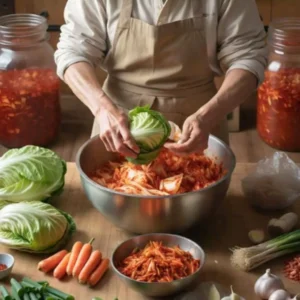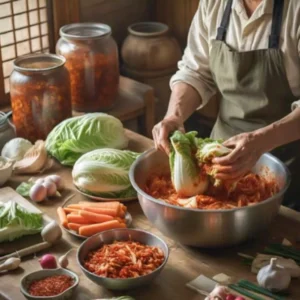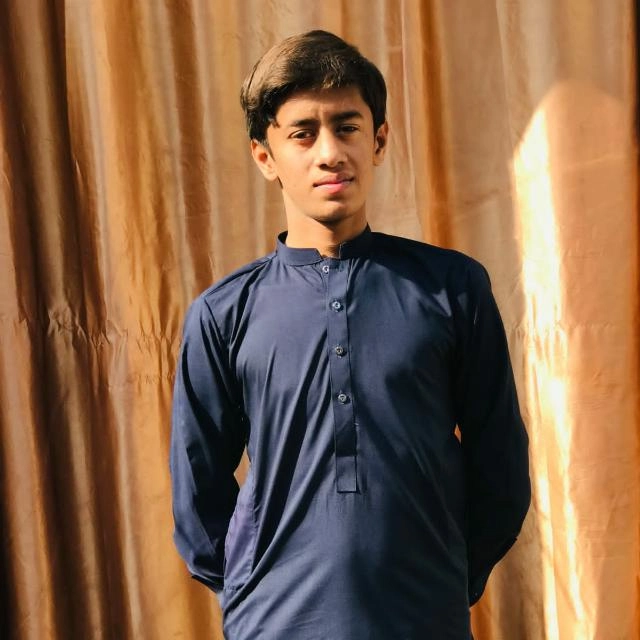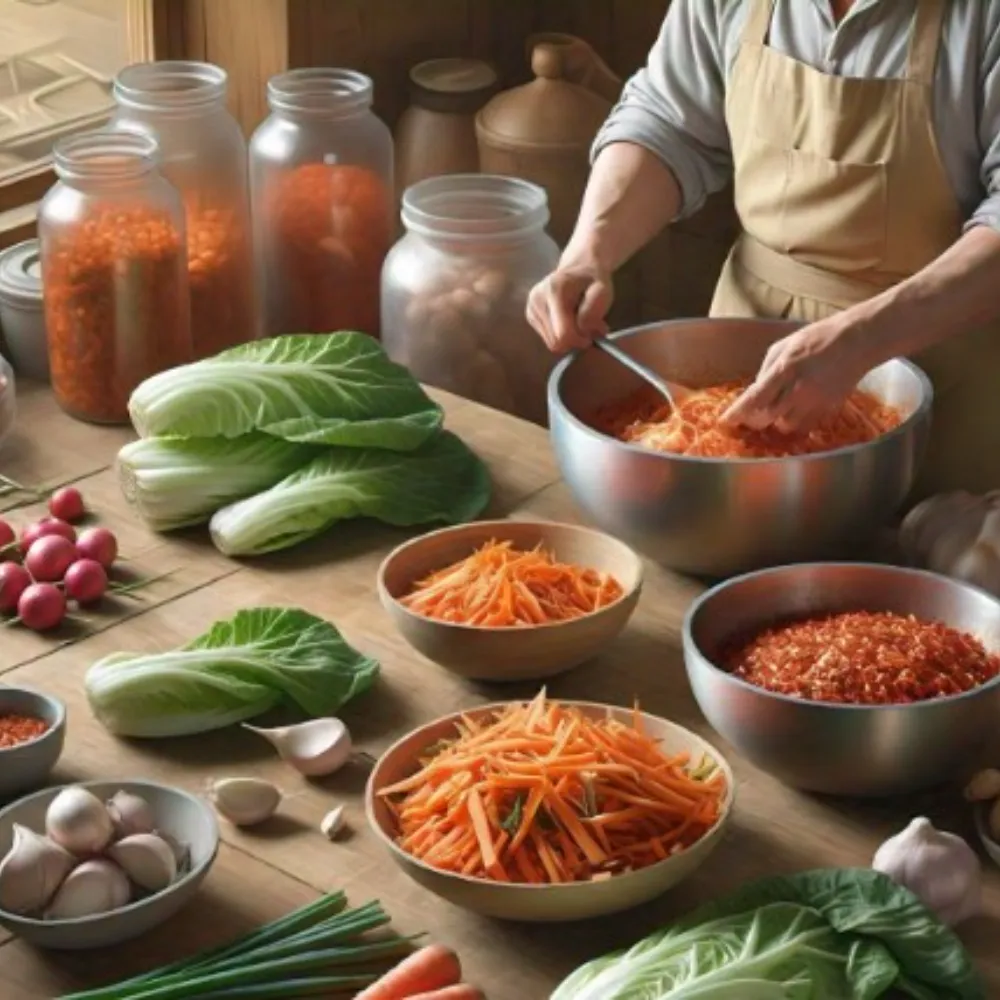The Complete Guide to Kimchi Making for Beginners
Begin a coronary undertaking with kimchi making. Known as a traditional Korean mise, this fermented dish is a raw, unadulterated embrace of the pungent, sour taste buds, as well as the health advantage. It may be a little confusing if it is your first, and don’t worry, because everything will be handled as we go.

We have created this comprehensive guide to be your one-stop shop to get from choosing the perfect produce to going further and expanding your fermentation skills. Staple equipment, traditional methods, and innovative spins on the type of kimchi that you will learn about are included.
This is the right place; whether you’re a food enthusiast or simply looking forward to having new cuisine added to your list of culinary skills for a kimchi recipe, you’re well equipped with all crucial information. I have 20 years of experience in cooking. So you can trust me.
Kimchi 101: Understanding the Basics of Korea’s National Dish
The Essence of Kimchi
Kimchi is a fermented vegetable dish, or more appropriately, a pickle, which has been claimed as Korea’s national dish, and indeed tongues have begun ringing around Korea. This all-natural, pungent, spicy, and tangy condiment in a jar is not only a food accompaniment but also a symbol of culture.
At the same time, kimchi, at its most basic, is just a flavor booster to a salad of napa cabbage, radishes, and other vegetables, with a salty, spicy garlic and ginger sauce of garlic, ginger, and gochujang (Korean red pepper flakes).
The Fermentation Process
Fermentation is what makes kimchi magic. Not only does that preserve the vegetables, but it also imparts a delicious depth of flavor and increases nutrition. When beneficial bacteria act, kimchi gets tangy, bubbly, and probiotic powerful from simple ingredients.
Varieties and Uses
There are countless regional and seasonal kimchi variations, and napa cabbage kimchi is the best known. Radish and cucumber kimchi each have their own taste experience. Beyond being a take on a side dish, kimchi can make for a very versatile food, served in stews, in fried rice, and, yes, even on sandwiches.
Step-by-Step Guide to Making Your First Kimchi at Home
Gather Your Ingredients
If you want to start making kimchi, try to prepare fresh Napa cabbage, Korean red pepper flakes, garlic, ginger, and fish sauce. This kimchi is composed of the basic ingredients of traditional kimchi.

Prepare the Cabbage
If you have bought it already washed, then, well, thoroughly wash it and dice it into bite-sized pieces. Generously salt the leaves and allow them to sit for a few hours. This will bring out the excess moisture, giving your finished product a crispy texture.
Create the Flavorful Paste
The cabbage brines, meanwhile, blend the gochugaru, minced garlic, grated ginger, and fish sauce into a brilliant, spicy paste. It makes the kimchi you mix with it spicy and umami.
Mix and Ferment
Place your cabbage, where it has been rinsed of salt, over your spicy paste in a way to make sure it is even coated. Ferment the mixture as usual, packing it tightly in clean jars, leaving some headspace for the fermentation to take place.
After a few days at room temperature, taste daily until it is tangy enough for you.
Essential Tools and Ingredients for Kimchi Making: A Beginner’s Checklist
Key Equipment
So, before you let your kimchi adventure begin, several tools are required to ensure that everything comes out as appropriate. Regarding the preparation of your picnic food, you begin by using a large mixing bowl to toss foods and a sharp knife to cut vegetables.
Buy airtight fermentation containers so they will age properly. Then don’t forget long-hand wooden spoons to mix with and food-grade gloves for your hands to protect them from the spicy mix.
Must-Have Ingredients
However, the ingredients are the heart of kimchi. The base is that of napa cabbage, and the spice is Korean red pepper flakes, known as gochugaru. Green onions, garlic, and ginger add much-needed flavor.
For some umami, add fish sauce, salted seafood, or even some Japanese soy sauce. Salt is necessary for fermentation, and sugar levels things out. Lastly, I add carrots, radishes, or other crunch and nutrition for salads.
10 Kimchi Myths Debunked: Facts Every Beginner Should Know
Myth 1: All Kimchi Is Spicy
Yet not all kimchi comes with fire. Most varieties contain gochujang (Korean red pepper flakes), but there are also a lot of non-spicy ones. Unlike the spicy fermented kimchi that you are used to, white kimchi, or baek kimchi, has a refreshing, tangy flavor with no added heat.

Myth 2: Kimchi Is Always Made with Napa Cabbage
Korean cuisine has 200-plus varieties of kimchi, but Napa cabbage kimchi (baechu kimchi) is the most common type. Yet radish or cucumber, or green onion, or even seafood-based kimchis, the potential is endless. Just don’t limit yourself to just one type!
Myth 3: Kimchi Is Difficult to Make at Home
Almost everyone will be shocked to learn that it is not that hard to make kimchi at home. Delicious, probiotic-rich kimchi is easy to prepare in your home with only some essential ingredients and time on your hands.
Quick Kimchi Recipes for Beginners in Under an Hour
If anyone is curious about making kimchi but doesn’t want to wait for the long fermentation process, quick kimchi recipes are a perfect solution. Although not as complex in flavor as their long-fermented kin, these speedy versions still put one between their lips with a pounce and introduce you to the art of kimchi making.
Express Cabbage Kimchi
To speed things up, start with pre-shared Napa cabbage. Add to a mix of gochujang (Korean red pepper flakes), minced garlic, grated ginger, and fish sauce. Give it a little sugar to balance.
Mix the mixture and apply it to the cabbage; leave it for 30 minutes. This quick version comes out with an essence of its tangy, spicy vibe.
Radish Kimchi in a Flash
A crunchy alternative is daikon radish kimchi. Radish, slice thin and dress with a similar spice mixture as the cabbage dressing. The carrots added for color and sweetness are julienned. Within 45 minutes, it’s ready and squeaky fresh—a variation on this theme.
The Science Behind Kimchi Fermentation: Why It’s Good for You
Because kimchi was fermented, it holds the show health benefits. This ancient method of preservation turns simple ingredients into a probiotic powerhouse. Bacteria beneficial break down sugars and carbs into lactic acid using fermentation. What’s more, this also makes kimchi chock full of nutritional goodness.
And what’s more, kimchi genuinely ferments and contains active cultures, unlike the yogurt that most of us are familiar with. Additionally, probiotics maintain digestive health as they impact the ratio of your probiotic and antibiotic intestinal flora. The process also improves the bioavailability of nutrients in your body, making your body receive more vitamins and minerals.
Secondly, fermentation creates antioxidants that weren’t in the original ingredients. Fighting inflammation and perhaps reducing disease risk, these compounds help. Kimchi is also a well-rounded superfood that’s low in calories and high in fiber, a nutritious addition to any diet, and flavorfully so.
Troubleshooting Kimchi: How to Fix Common Beginner Mistakes
Too Salty or Not Salty Enough
To balance salt, kimchi requires that the flavors are all in balance. If you use a batch that is too salty, rinse the vegetables well in advance of fermentation. If your kimchi tastes undersalted, you can just begin adding more salt gradually and tasting as you go.

Needless to say, salt levels influence the speed of fermentation and the texture.
Preventing Mold Growth
If you want to keep mold out, make sure your vegetables are fully submerged in brine. Use clean containers and utensils, and add some vinegar for higher acidity if you use it. Discard any mold you see.
Dealing with Overly Sour Kimchi
If your kimchi gets too sour and becomes too acidic, then you can add a little bit of sugar to help balance the flavors. Or you can use it in cooked dishes like kimchi jjigae (stew) or kimchi fried rice, where the sour stuff goes along with something else and makes it seem vibrant and dynamic.
Kimchi Beyond the Cabbage: Easy Variations for First-Time Makers
The most famous variety is Napa cabbage kimchi, but try other vegetables as a way to get beyond the standard kimchi experience. With its crunchy, refreshing quality as an alternative for beginners, radish kimchi (kkakdugi) is very easy to cook. Cube Korean radishes, add the traditional kimchi seasonings, and ferment.
Cucumber kimchi (oi sobagi) is another approachable option as well. For those new to fermented foods, its quick preparation time and milder flavor profile when compared to other options are optimal. Small cucumbers can be sliced lengthwise, stuffed with a spicy mixture, and then eaten within just a day or two of that fermentation.
Instead, put a twist on water kimchi (mul kimchi). This amply zingy and refreshing variety of pickles is green with several vegetables, but in a clear brine, great for a steamy summer day. Not only will these variations add to your kimchi repertoire, but they will work as a foundation for mastering the art of traditional Korean kimchi making.
Conclusion
When you start making kimchi for the first time, you should know that practice makes perfect. Of course, your first batch isn’t going to turn out exactly like you had hoped; each next attempt is going to get you closer to the truth of this ancient art.
Play around with different vegetables and spices, and decide what length of fermentation you’d like to try. You will soon be making delicious probiotic-rich kimchi that’s up to par with anything you buy in the store, as long as you have patience and persistence.
Kimchi making is a wonderful process to join in with the Koreans for the magic of connecting with authentic Filipino culinary traditions or as a means to gain some more mechanical fermentation skills. Then gather your ingredients, pop a few covers into the oven, and let the fermentation commence!
Frequently Asked Questions
How long does kimchi last?
Kimchi, if properly stored, will last several months. It typically lasts 3 to 6 months in the fridge if it’s refrigerated in an airtight container. Over time, it ferments, and the flavor gets tangier.
Can I make kimchi without fish sauce?
Of course, replacing fish sauce with things like kelp powder and caramelizing onions for umami flavor Several more recipes are pescatarian, vegan, or vegetarian suitable.
What’s the best way to serve kimchi?
The best meal in the whole world cannot go without being featured here, and that meal is kimchi. It can be taken as a separate extra course, be included in rice and stew recipes, be served on burgers, or be in fusion meals. And its bold flavor is a good enough match for any cuisine besides Korean food.
About Us:
Rooted in Tradition: Unique Thanksgiving Side Recipes
The Complete Guide to Kimchi Making for Beginners

Hello! My name is Wahab Khan. I, having over 20 years of culinary experience, bring both my knowledge and passion to each Recipe featured here. I create delicious, accessible dishes for beginners and seasoned cooks alike, and think that good food can help connect people. My recipes combine timeless techniques with stellar new spins, allowing readers to master the everyday flavors of the World.
